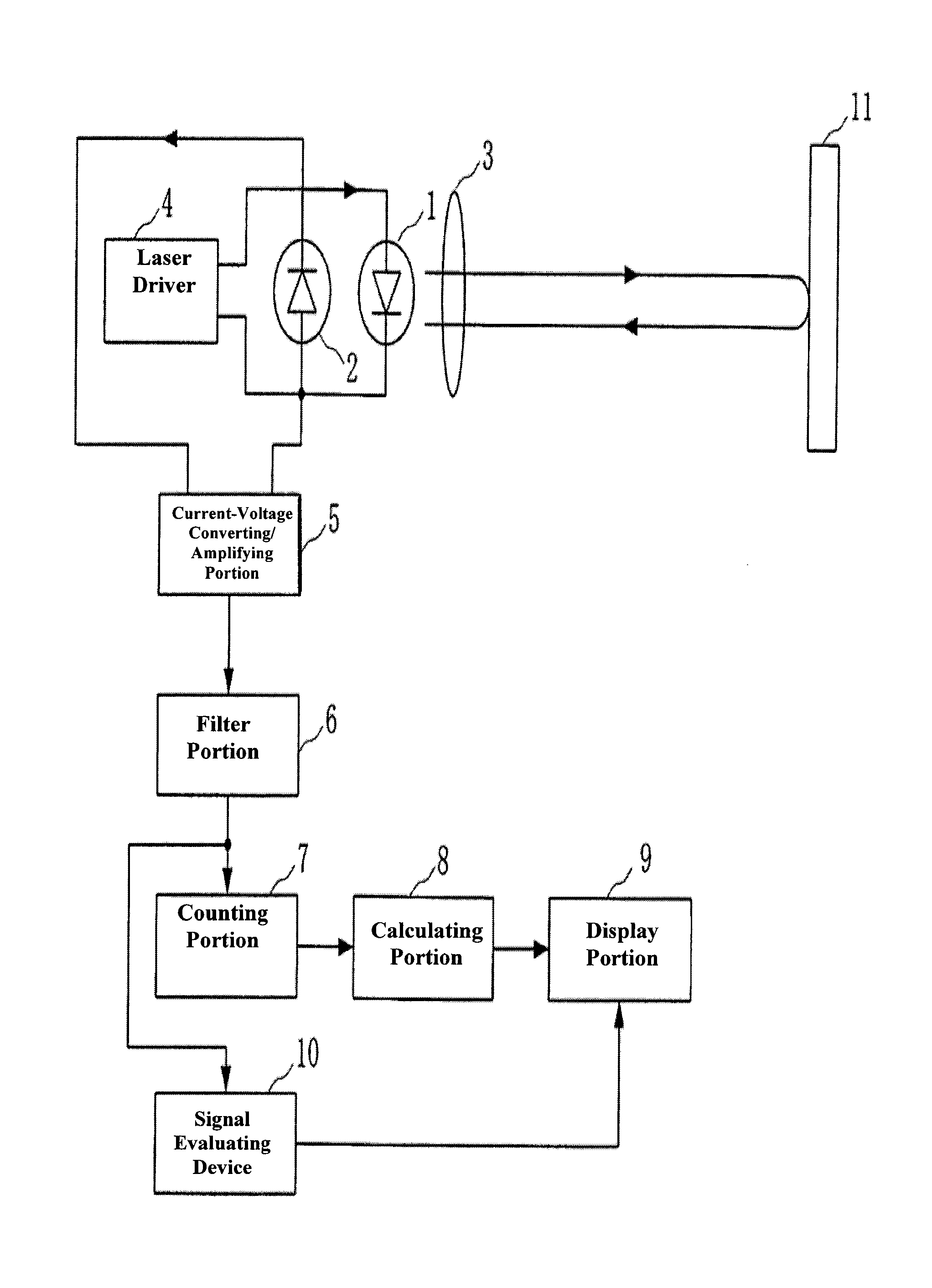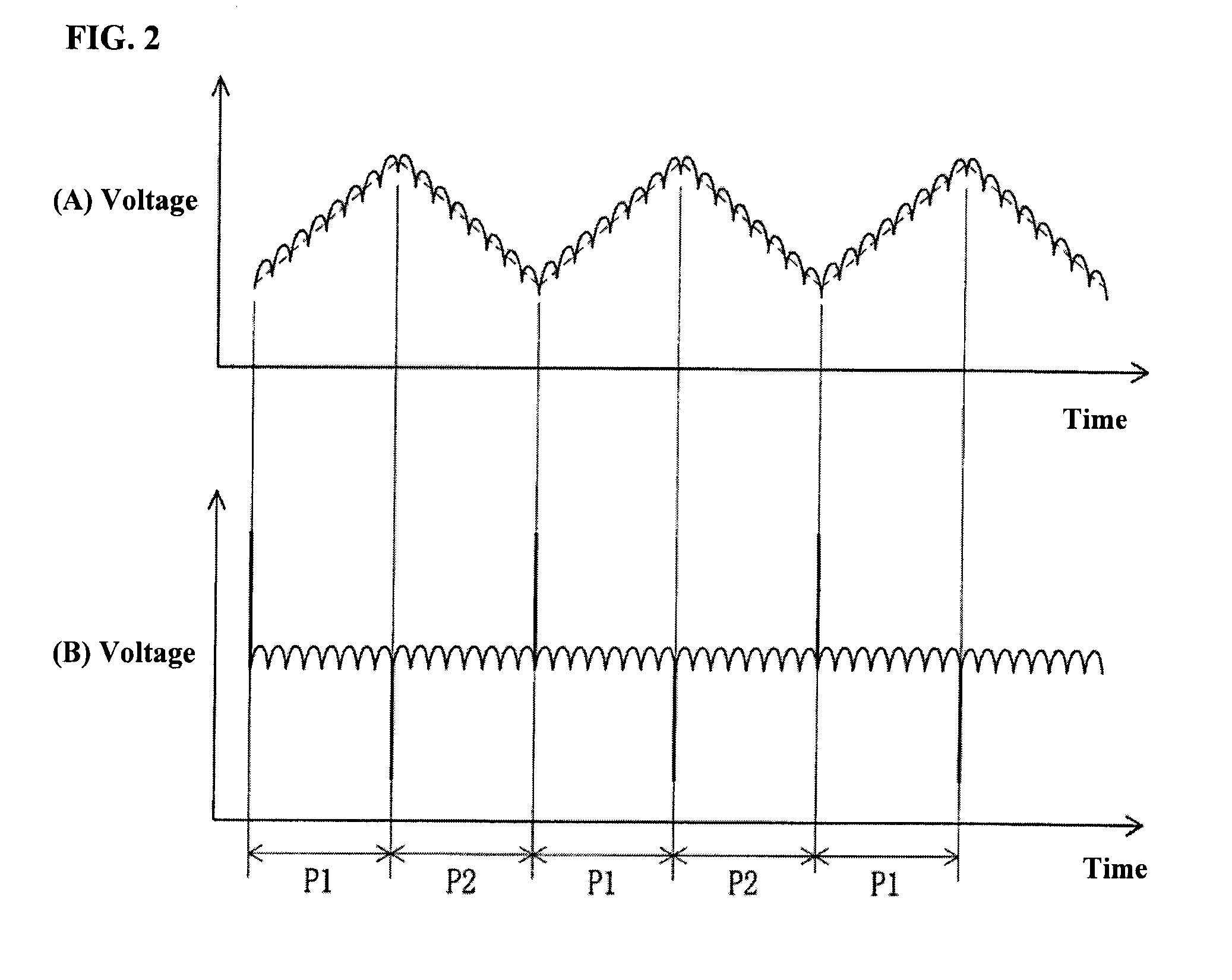Signal evaluating device and signal evaluating method
a signal evaluation and signal technology, applied in the direction of optical radiation measurement, instruments, using reradiation, etc., can solve the problems of large amount of calculation required, difficult to evaluate whether the output of the signal extracting circuit is noise or a signal, and no easy method for achieving an evaluation of whether, etc., to achieve low calculation overhead, easy evaluation, and short evaluation period
- Summary
- Abstract
- Description
- Claims
- Application Information
AI Technical Summary
Benefits of technology
Problems solved by technology
Method used
Image
Examples
Embodiment Construction
[0031]Forms for carrying out the present invention is explained below in reference to the figures. FIG. 1 is a block diagram illustrating a structure of a self-coupled laser sensor according to an example.
[0032]The self-coupling laser sensor in FIG. 1 includes a semiconductor laser 1 for emitting a laser beam at a object 11 that is the subject of the measurement; a photodiode 2 for converting the optical power of the semiconductor laser 1 into an electric signal; a lens 3 for focusing and emitting light from the semiconductor laser 1, and for focusing and injecting into the semiconductor laser 1 the return light from the object 11; a laser driver 4 that serves as oscillating wavelength modulating means for driving the semiconductor laser 1; a current-voltage converting / amplifying portion 5 for converting the output current from the photodiode 2 into a voltage and for amplifying that voltage; a filter portion 6 for eliminating the carrier wave from the output voltage of the current-v...
PUM
 Login to View More
Login to View More Abstract
Description
Claims
Application Information
 Login to View More
Login to View More - R&D
- Intellectual Property
- Life Sciences
- Materials
- Tech Scout
- Unparalleled Data Quality
- Higher Quality Content
- 60% Fewer Hallucinations
Browse by: Latest US Patents, China's latest patents, Technical Efficacy Thesaurus, Application Domain, Technology Topic, Popular Technical Reports.
© 2025 PatSnap. All rights reserved.Legal|Privacy policy|Modern Slavery Act Transparency Statement|Sitemap|About US| Contact US: help@patsnap.com



